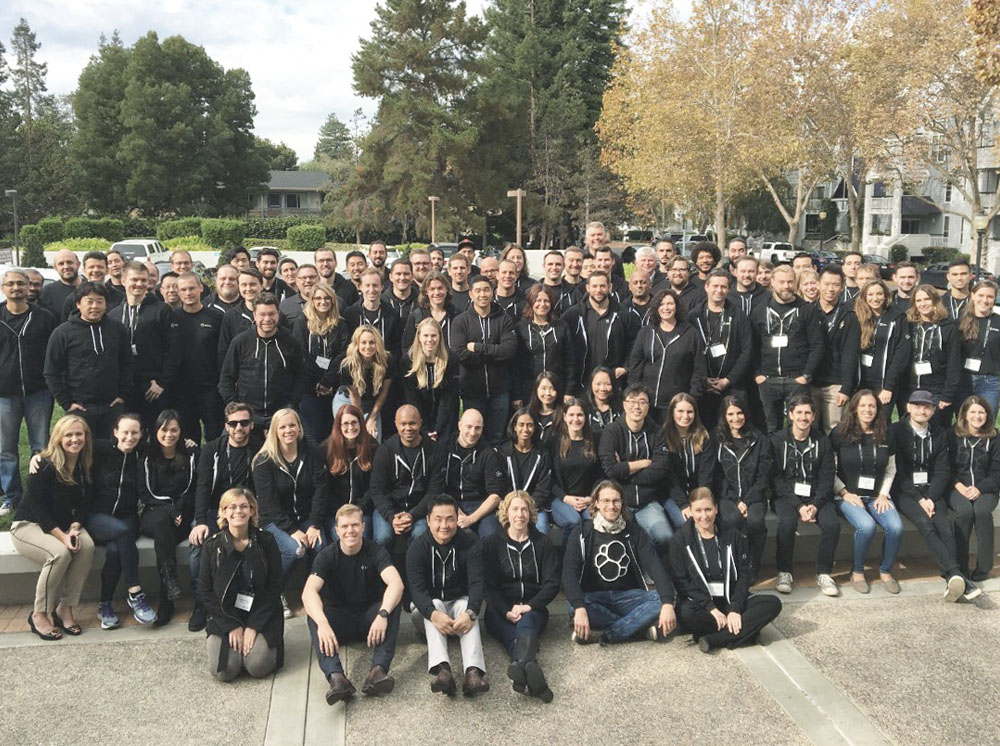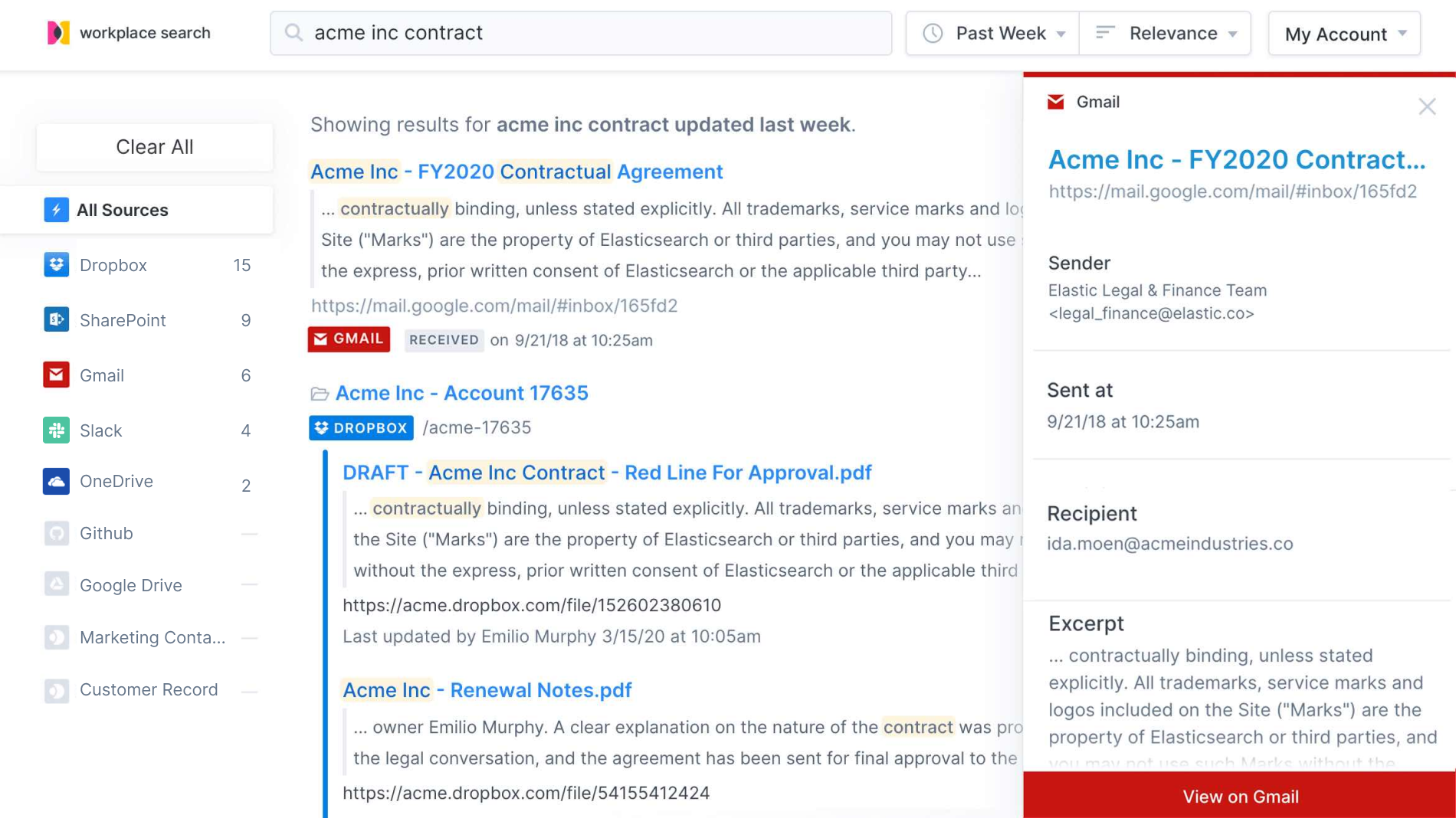Made @ Elastic | Going distributed with Workplace Search
Teams around the world are going through changes. With offices closed from Hong Kong to San Francisco, Zoom meetings are the new norm, and online platforms are the standard for collaborating and keeping businesses running as usual.
We’ve written about distributed work and how doing distributed well requires the right tools. When a traditional office environment isn’t available, information naturally becomes fractured across multiple single-purpose platforms. Making sure employees are able to find the information they need quickly and efficiently is going to be a key challenge for all businesses in the months and years ahead.
As a search company, Elastic has been ahead of the curve in addressing this challenge. Our Enterprise Search team recently released Elastic Workplace Search to help teams work more productively by unifying content in one intuitive interface. We’re really proud of it. In fact, it’s so good we use it ourselves.
In this post, you’ll learn how the Enterprise Search team went from co-located to distributed, and how the lessons they learned along the way have become a part of the Workplace Search product and have changed the way we collaborate at Elastic.
From co-located to distributed
The Enterprise Search team’s origins go back to a small tech firm called Swiftype. Swiftype’s main product was a website search solution called Site Search, which was built on top of Elasticsearch. When Google’s site search tool offering faded into the sunset, Swiftype’s solution became popular and caught the eye of Elastic CEO Shay Banon. In late 2017, Shay had this to say when he announced that Swiftype and Elastic would be joining forces:
“I’ve always viewed ‘search’ as a wonderful foundation to solve many different use cases, whether it is search embedded in an application; search used for logging, security, or metrics; or search being used to create a whole set of new applications and products. Well, Swiftype did this. They built an entire company focused on making it simple for users to put a search box on their websites or within their applications and an enterprise search product for organizations to manage disparate content from various web applications.”
Joining forces with Elastic was a big step for Swiftype, which at the time was co-located entirely in an office in San Francisco. Matt Riley, one of the founders of Swiftype and now VP of product management for Elastic Enterprise Search, said the transition required the team to adapt to a new style of working.
“We were all, with the exception of one employee in Canada, used to working together out of the same office,” Matt said. “When we were first acquired, Quin Hoxie, the other founder of Swiftype, and I were invited to present during a keynote. We decided to wake up early to drive up to Mountain View to present, and when we told Shay this he asked why we didn’t just Zoom in. So learning how to be distributed took a bit of an adjustment.”
When the Swiftype team — now the Elastic Enterprise Search team — started hiring outside the San Francisco office, they were faced with another challenge. “We had to ask ourselves: How do we make employees feel like a legitimate part of the team when they’re distributed?” said Matt. “There's a balance you need to find between people who are sitting in a room together at a table and those who are on Zoom, or a phone call.”

Building Elastic Workplace Search
The Enterprise Search team’s experience joining Elastic from Swiftype played a significant role in how they developed as a product team. “We thought a lot about large companies that were recently fairly small — fast-growing startups,” said Matt. “We had a lot of empathy for the ‘new employee’ persona.” The team intimately understood the need to help employees pivot from a small number of traditional tools to a larger set of more collaborative tools — a new and different way of working for many people.
At the same time, becoming part of the Elastic family meant that the Enterprise Search team could innovate and evolve at a more rapid pace. “We were always built on Elasticsearch,” said Matt. “In fact, we were very early adopters of the platform. We knew it back to front and were building customizations to the Elasticsearch core that would fit our use case. Now that we’re a part of Elastic, and have access to Elasticsearch developers, our product has begun to grow and evolve faster, making things possible that weren’t before.”
The Enterprise Search team channeled that momentum into working on Elastic Workplace Search — a unified search platform that seamlessly connects to a variety of tools commonly used by organizations, including productivity tools such as Google Suite and Microsoft 365, online storage platforms such as Google Drive, OneDrive, and Dropbox, collaboration tools, and more.

“Workplace Search is a culmination of numerous inspiring encounters that we’ve had over the years,” said Jonas Lavoie, who is responsible for product initiatives for Workplace Search. “We began to see that work was happening faster and in more distributed ways than ever, with a wealth of content being created in real time on a broad range of collaboration tools. We wanted to make that content searchable for every employee at every company.”
Ushering in a new state of find
The Enterprise Search team had deep empathy for companies — and employees — experiencing rapid growth, a shift to distributed work, and an explosion of collaborative tools. So after developing the Workplace Search product, the first thing the team asked was: Why not be our own first customer?
The team undertook an initiative to deploy Elastic Workplace Search internally at Elastic, taking a sprawling collection of knowledge across applications — from Google Docs to Salesforce to GitHub — and turning it into an easily searchable library. Through a cross-functional collaboration and with help from the Infra, IT Ops, and IT Products teams, the Enterprise Search team was able to implement a tailored search experience for each team at Elastic.
Feedback was overwhelmingly positive. In particular, newly hired Elasticians found Workplace Search extremely useful in onboarding. But Elasticians shared comments that pushed the team to improve the product, too. “It was a really good learning experience for us,” said Diane Tetrault, director of product marketing for Elastic Enterprise Search. “You have this company full of people who are really good at making search simple. So we knew that we were going to be our own harshest critics. We wanted to start small and only have a few sources and make it easy to contain but from the beginning our teams wanted more, and pushed us to do better.”
So, what’s next?
Elastic Workplace Search became generally available in May, but there’s still a lot of work going on behind the scenes to continue pushing the boundaries of connected, distributed workspaces. The team will continue to focus on developing new integrations, expanding where teams can search from, and making it easier for operators to provide a high-quality experience to their teams with as little friction as possible.
And as the product evolves, the Enterprise Search team and Elastic as a whole will continue to use Workplace Search to make collaboration easier — whether we’re all together in the office or distributed.
Interested in joining Elastic? We’re hiring. Check out our teams and find the right career for you! Want to read more about life at Elastic? Read more on our blog!